Annika is a 1959 pre-TS60000 TR3A that sports a split steering column. The lower section is essentially the steering box, connected by a steel splined double female sleeve to an upper section that connects to the steering wheel boss and wheel. The larger diameter tube you see is fixed. Only an inner steel tube that rides in a rubber/delrin bush actually turns with the steering wheel. The steering column in this particular photo is an extra one that is so corroded that I can’t even get the coupler apart as there is a third tube (the stator) inside the smaller one you see and it is rusted solid within the unit. If you are thinking about Russian dolls I’m with you… a horribly seized, rusted, Russian doll.
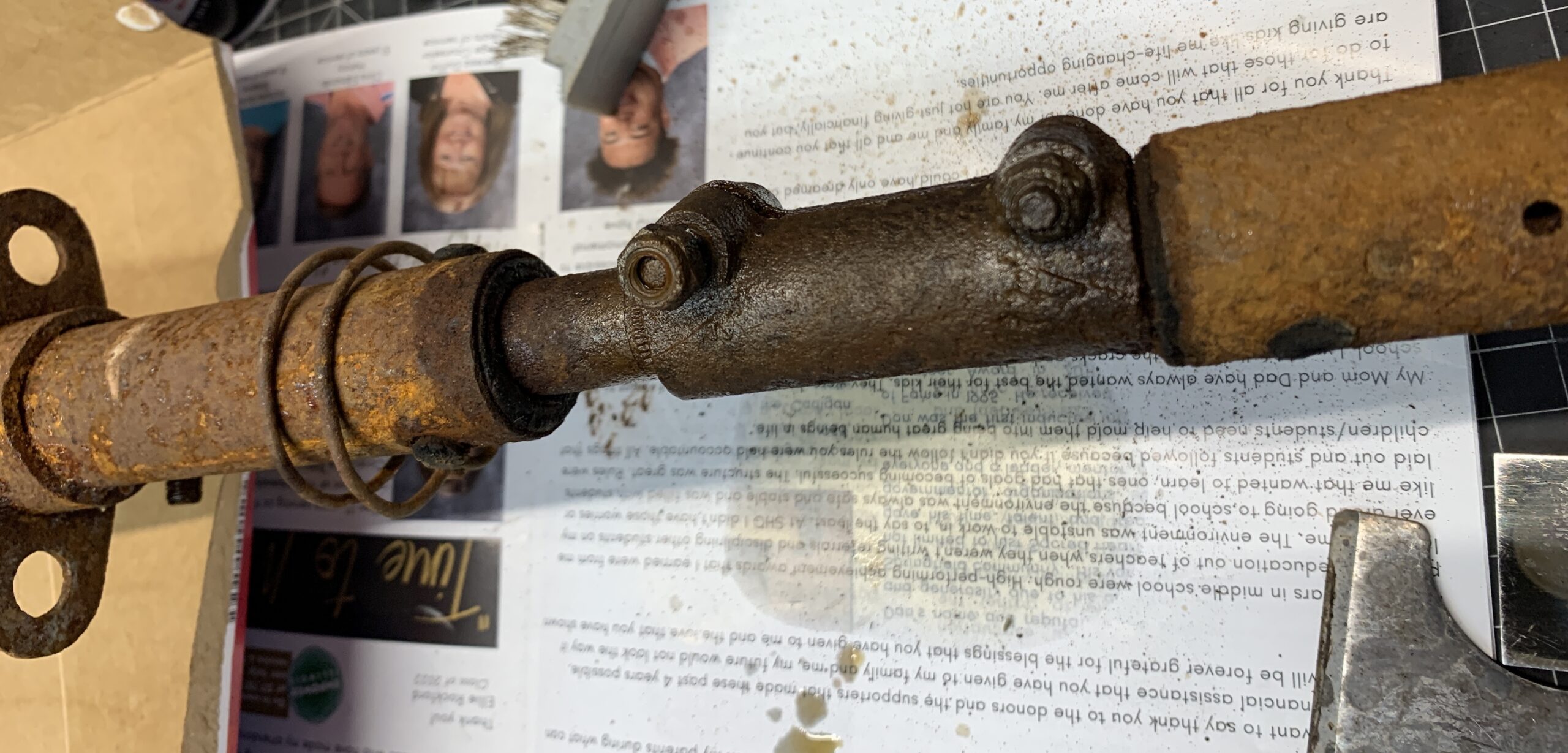
There are several support structures between steering box and steering wheel. The lowest is a stiffening bracket that stabilizes the box. I’ve never actually seen it installed, but I gather it mounts to the frame rail someplace. Its now ready to bolt on if I can actually find where.
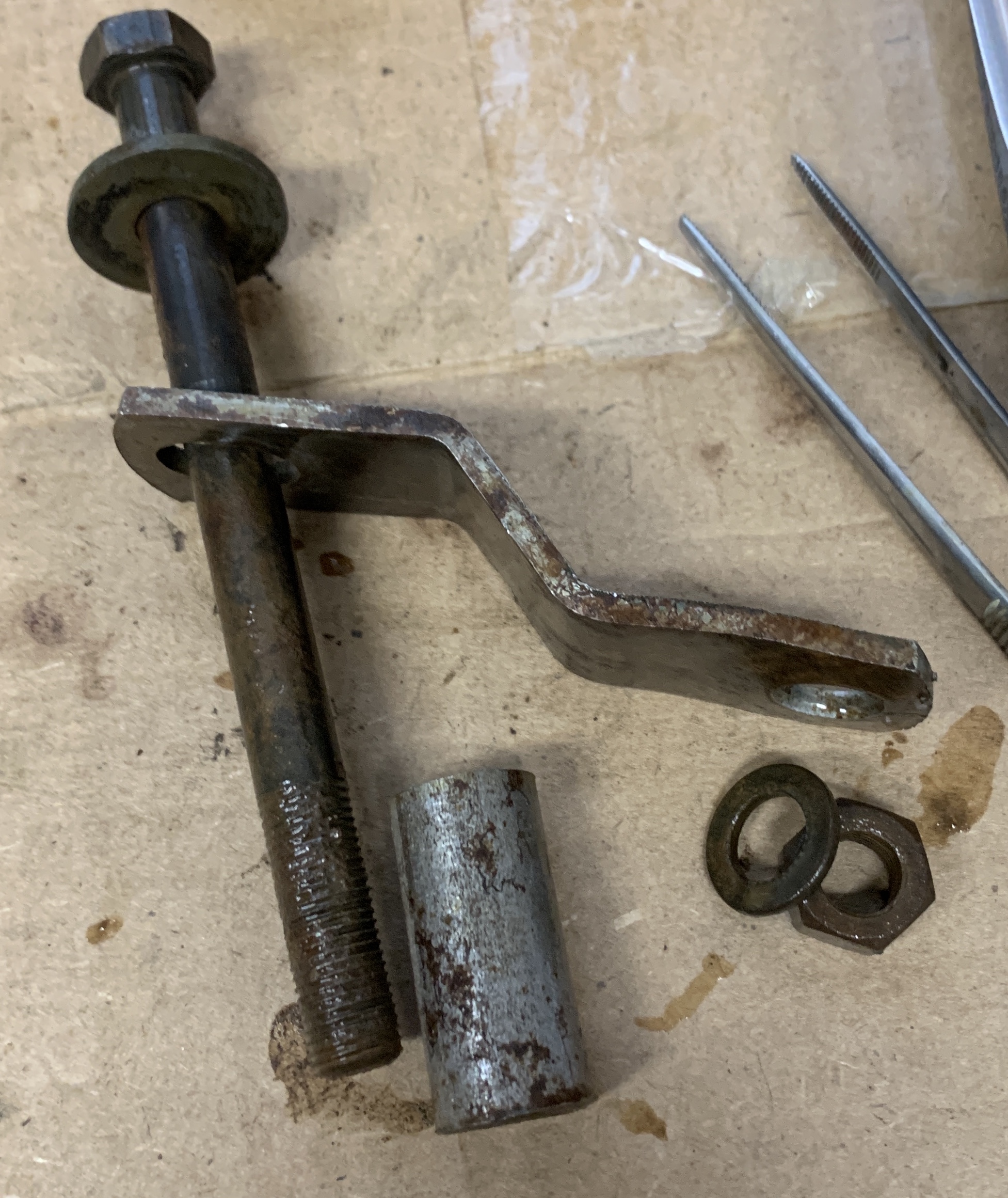
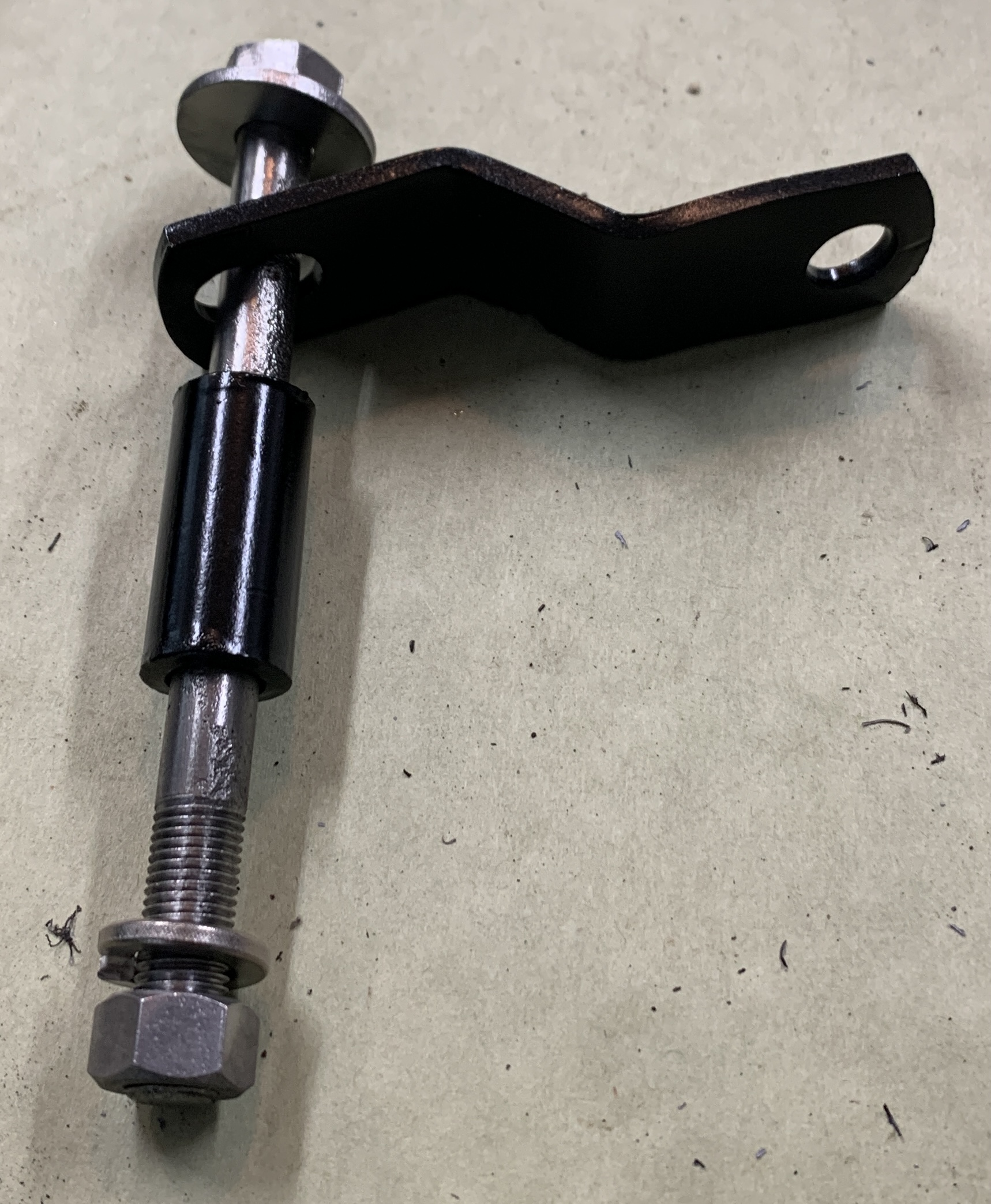
Just above the box is another bracket that attaches to the column itself, but the only one I have is super rusted so I’m on a search for a better one. You can just see it to the left in the top photo. Next, at the firewall is a support bracket that started off rough and finished nicely.
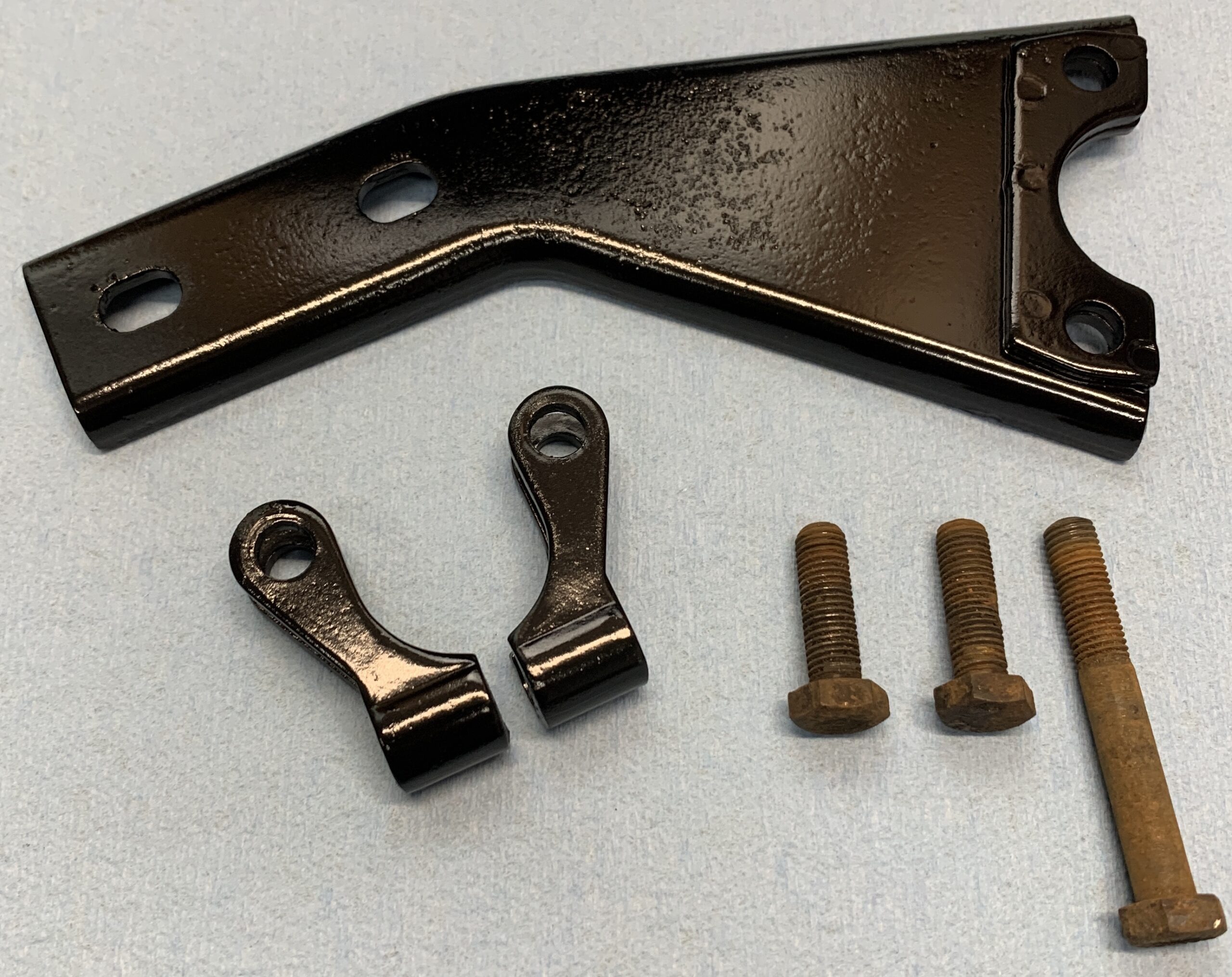
The way I’ve been prepping my fasteners is to soak them in a chelating rust dissolver. I am now using Rust911, which is a concentrate I order from Amazon (~$50). I dilute it with water to 10-20:1. The initially clear colorless solution turns black as the non-metal iron is dissolved and pulled off the part. The claim of these treatments is that they don’t pull good metal into solution, only the rust. From a chemists perspective this is OK, the oxidized iron can be dissolved using the “chelator” but metallic iron won’t, that is unless you leave it too long in air and water and the metallic iron starts to inevitably oxidize, which lets the chelator pull it into the solution. All metallic iron will eventually go to trivalent iron in an oxygen atmosphere (Fe2O3… rust). So, the moral of the story is these solutions work great to dissolve only the rust, but don’t forget about them. After rust treatment a little wire wheeling and they look great. I’ve considered getting these re-zinc plated en mass, but have yet to give that a try. The sacrificial zinc coating is likely gone, so they will rust more easily now. Of course, they won’t be driven in the rain anymore so probably all OK.
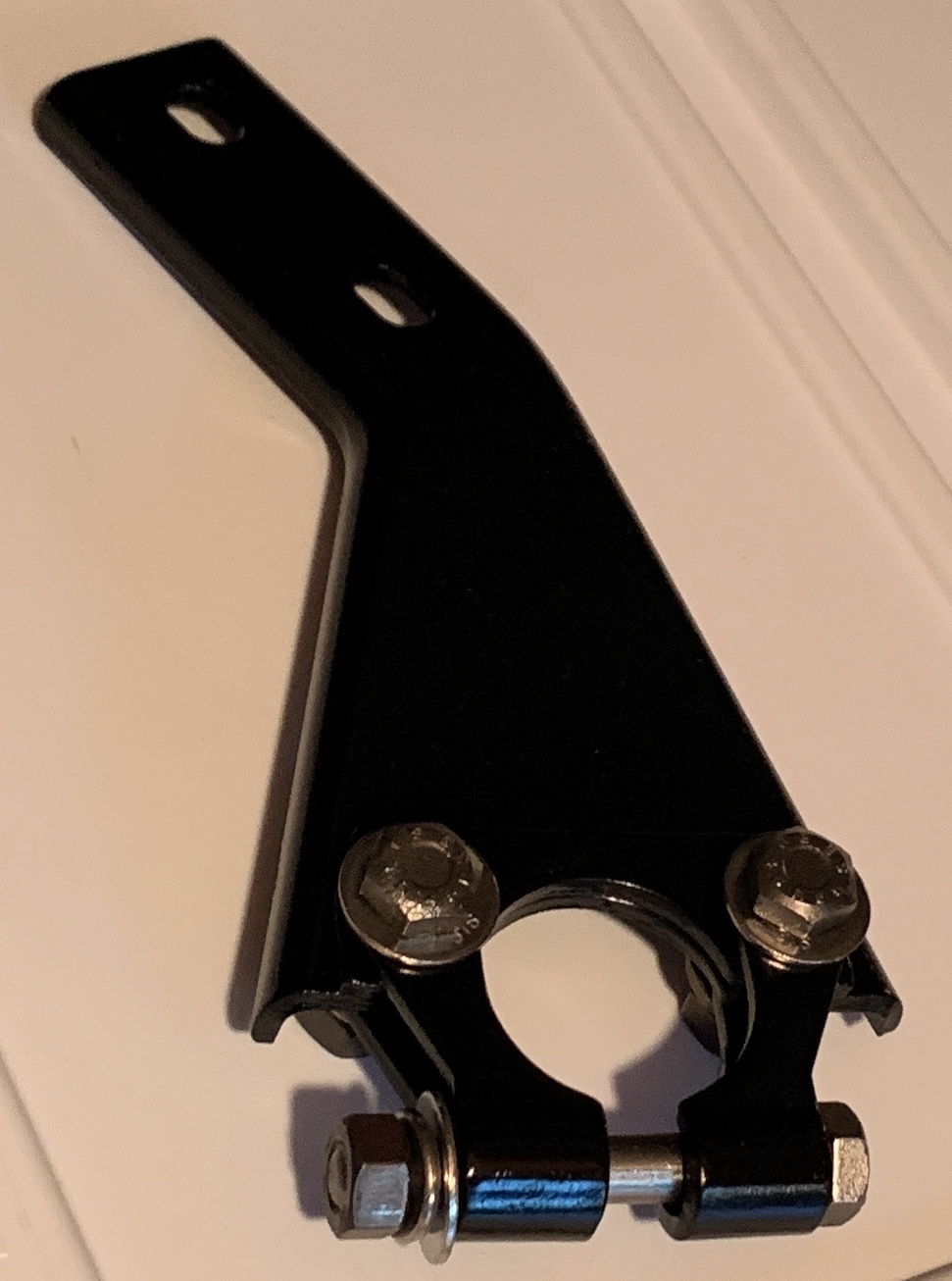
After the above bracket, which mounts to the firewall, was the under dash bracketry. This was a straightforward disassemble, pay attention to the fasteners, media blast, paint, and assembly is the opposite of disassembly.
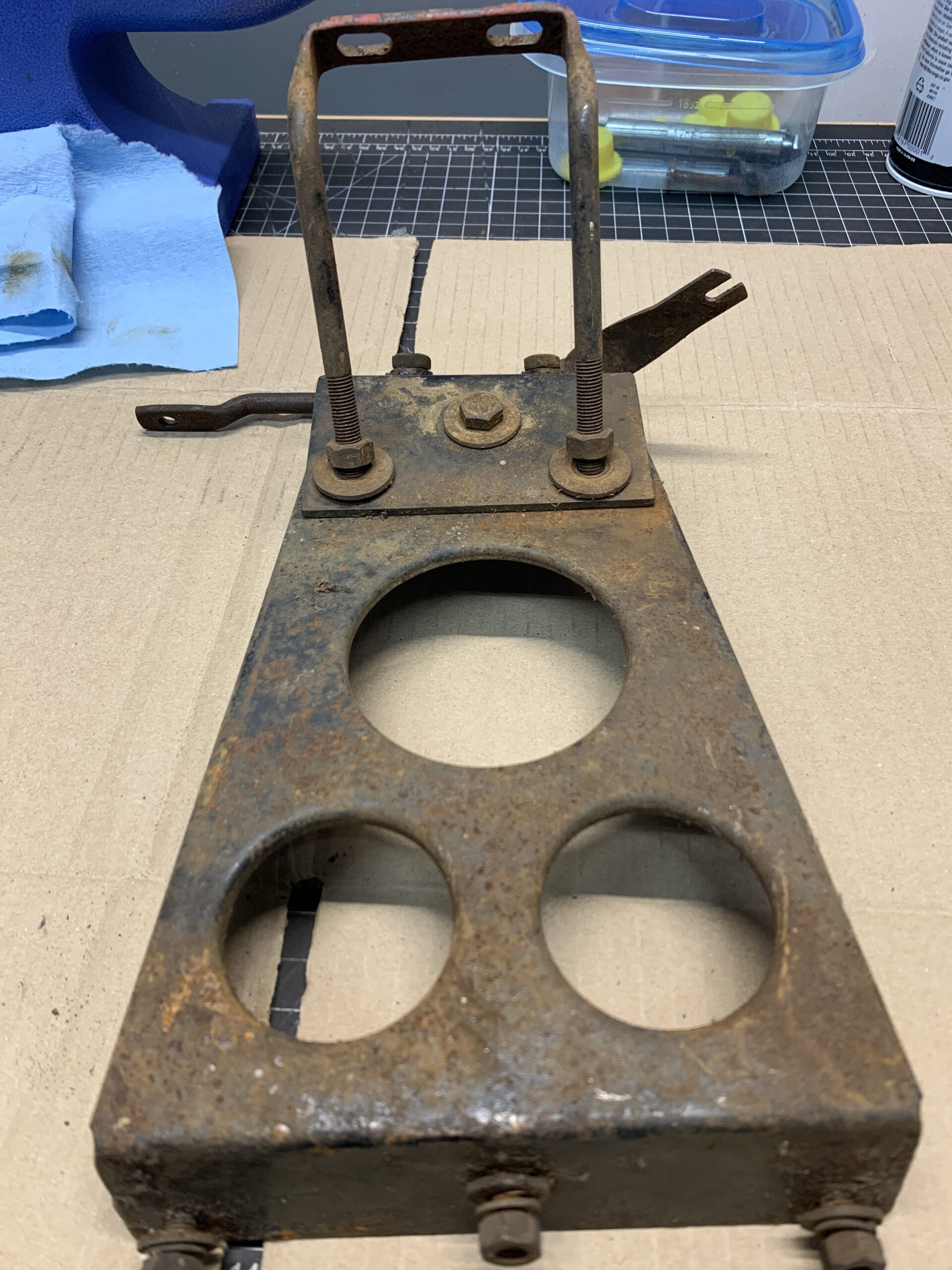
Again, having never seen these mounted in person, I’ll take the word of the moss catalog diagrams.
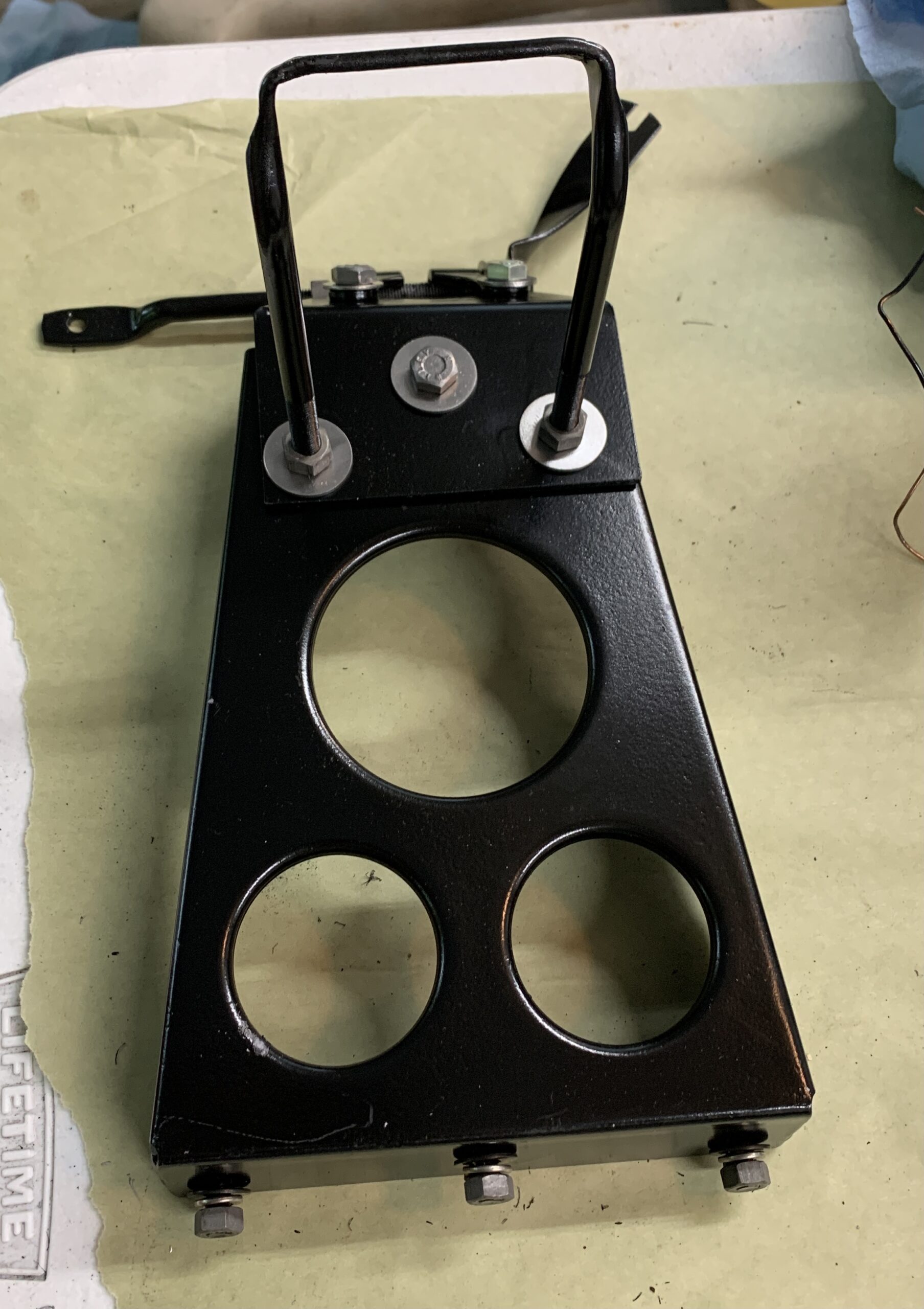
These pieces are also now put away into storage… ready for a future big reveal.
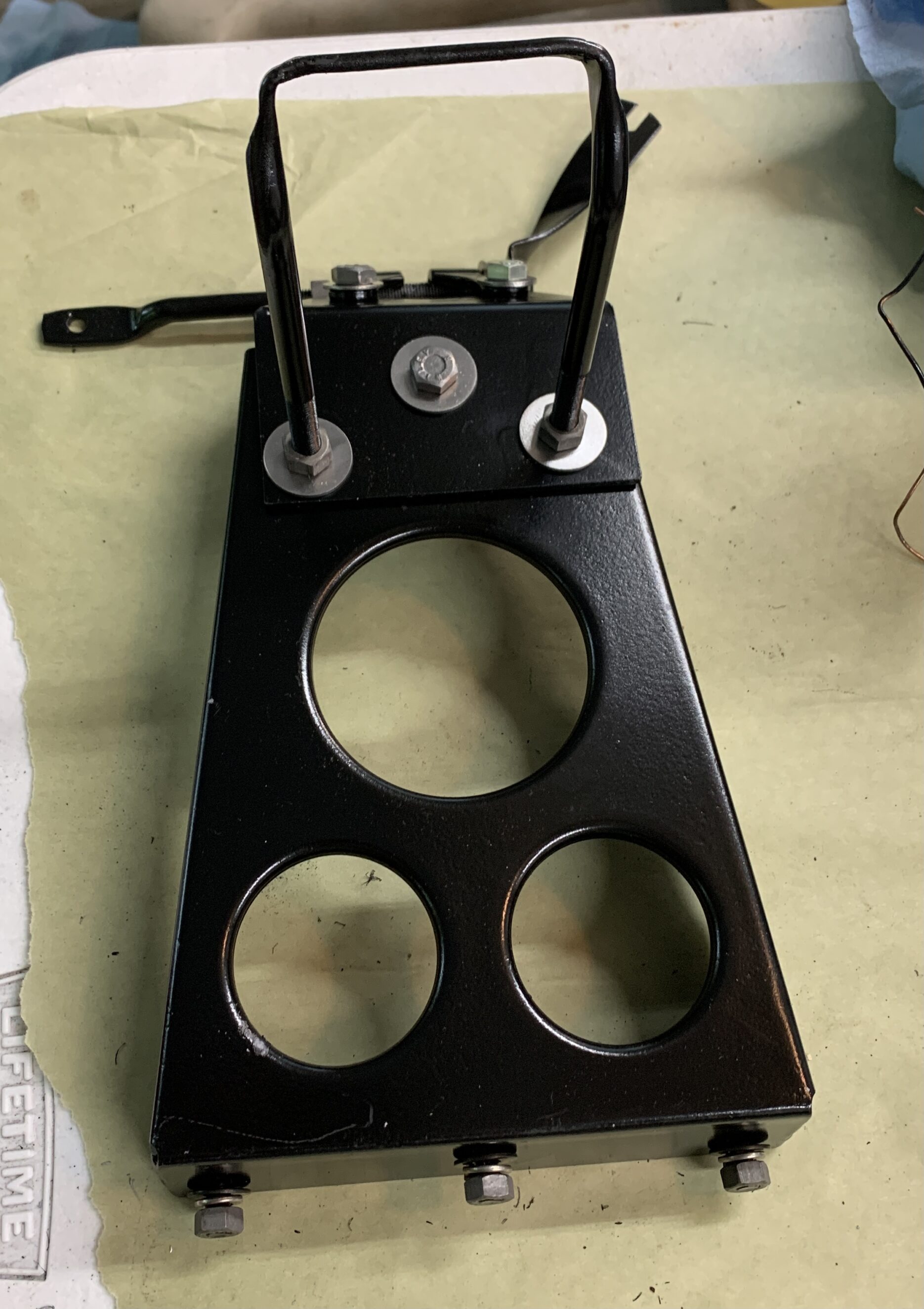
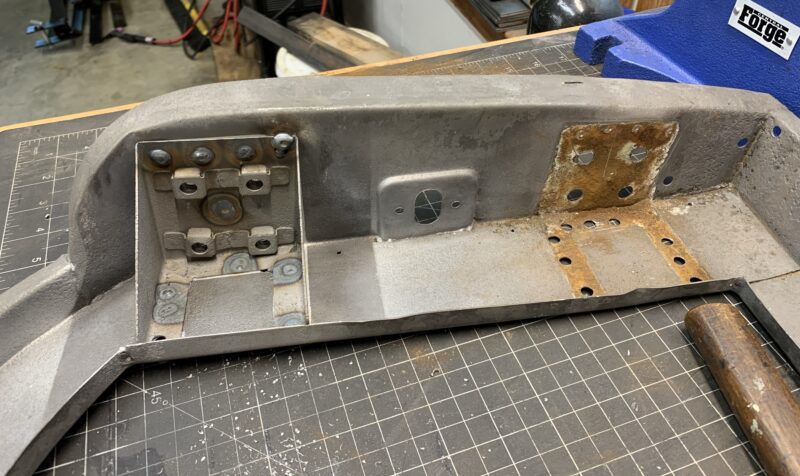
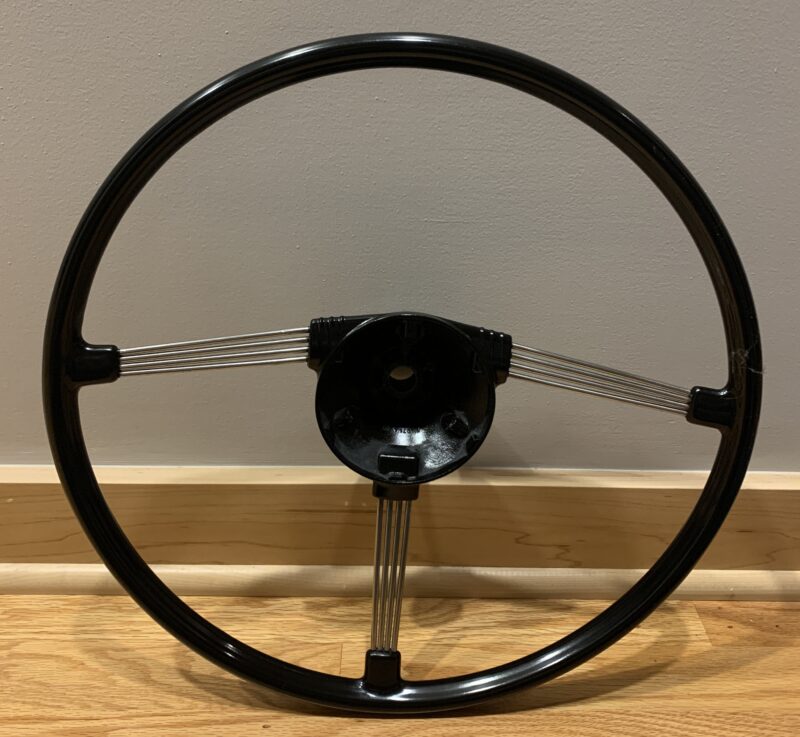
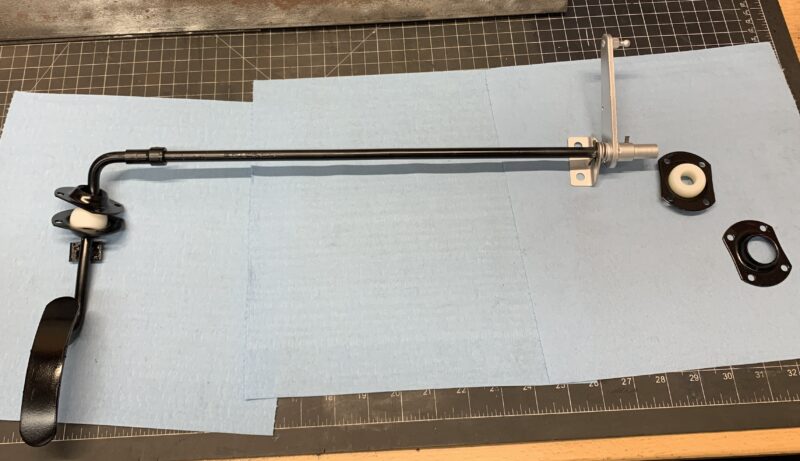
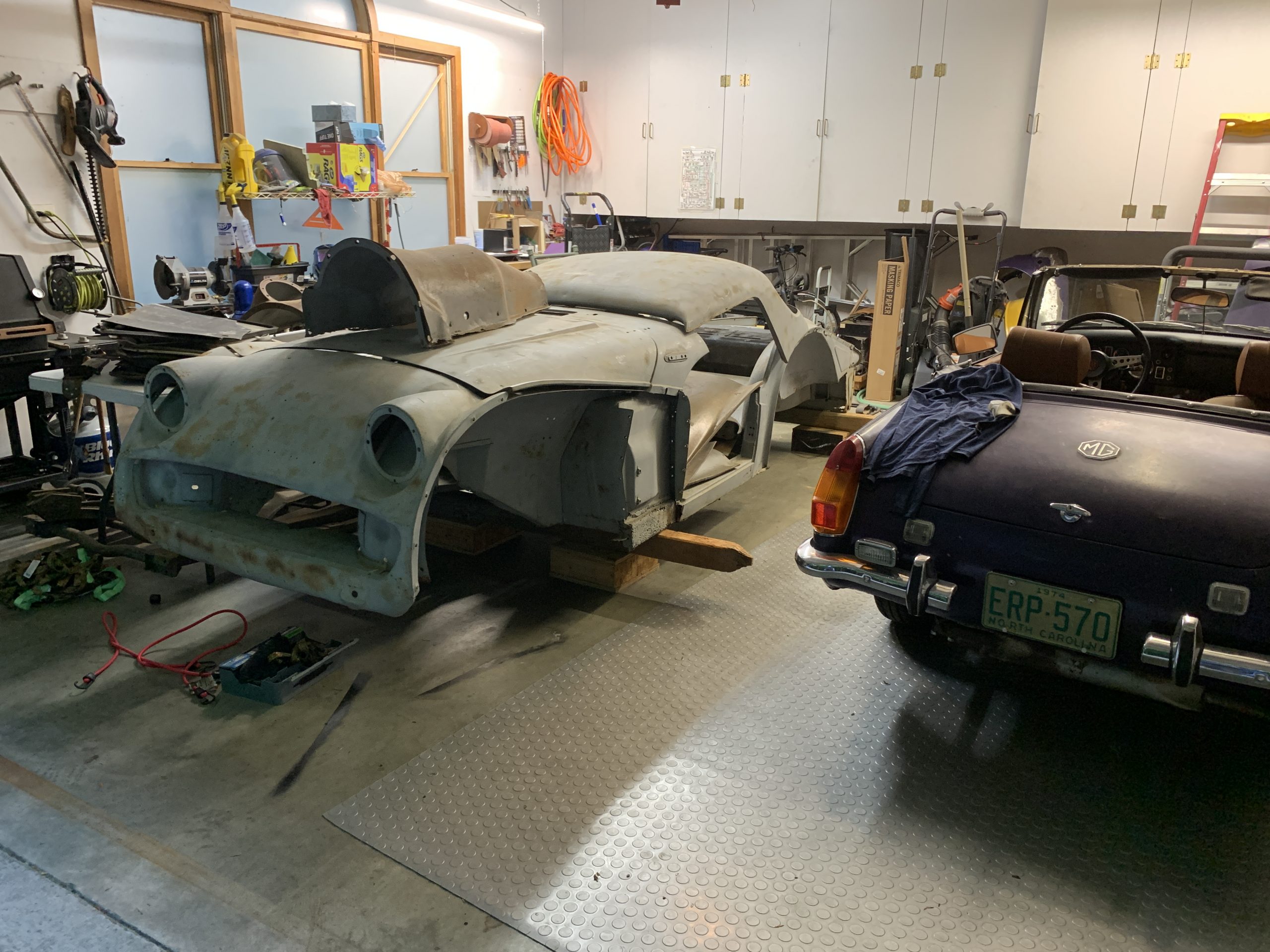
Recent Comments